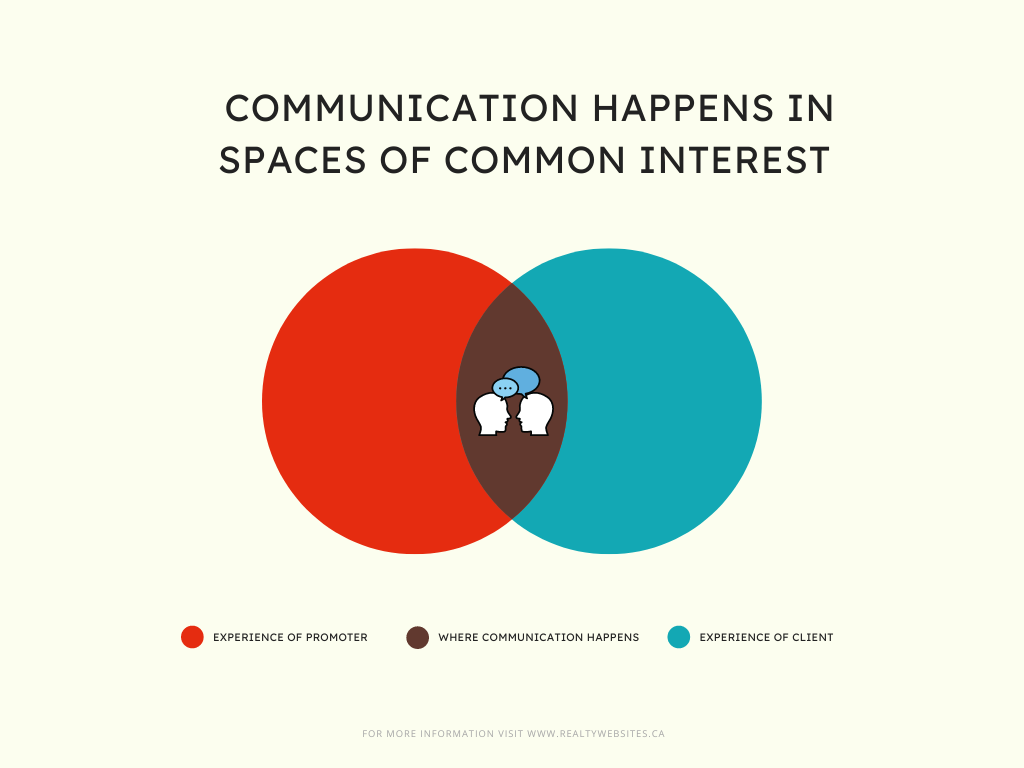
Communication is the foundation of integrated marketing so promoters need to understand the basics before they can create a marketing program. The basic model will produce an effect based on how consumers will process the message. This has implications for planning and strategy but also how the response is managed.
Communication is defined as an exchange of information and ideas between stakeholders in a relationship. It starts with having something in common, such as a philosophy or a goal. When communication is ‘frictionless’ we refer to a sales person as easy to get along with or even intuitive.
There are a lot of moving parts in a professional designed communication strategy. Part of the promotional message is embedded in graphics and traditional communications, such as websites, but also in metaphors that help a consumer ‘feel’ the benefits of a service or product. Large firms employ consultants to choose the friendliest look and feel to achieve frictionless sales. If you are expert with copyright and symbolism, it will be reflected in your communication strategy. If not, you may want someone to help you create messaging for your ads.
The communication plan can be visualized as a Venn Diagram with two overlapping circles. Each circle represents the field of experience for the promoter and the consumer; the overlap is the shared communication channel. Anything you want to communicate to the consumer must fit in this zone. If it doesn’t, you may need to educate the consumer to increase the overlap.
The message needs to be encoded, or translated from real estate-speak, with the use of symbols to represent ideas and information. For example, a consumer might ask what an agent does for them. The technical answer is the fiduciary relationship. An encoded answer might be ‘trust and loyalty by law’ or something similar. An alternative approach would be to educate the consumer on the dimensions of fiduciary. Both approaches would channel the message through the common field of experience. The result? Message received!
An expert promoter may be focused on semiotics, which is how we assign and understand meaning in our social environment. Ads that capitalize on semiotics have three basic features: the product (a downtown condo), the imagery (a young professional dressed sharp), and the meaning that we perceive (attainment and success). In this example, the metaphor takes shape with the image of a young woman proudly walking through the downtown of her city. The consumer doesn’t even need to see the condo tower because the ad is selling the urban lifestyle. As an experiment, try creating an ad based on this formula. You’ll know it’s a success when you feel it working on you, personally.
It’s easy to assume that a well-encoded message will be received by the consumer but that’s not always the way. The encoded message needs to be multi-dimensional and interdisciplinary. For example, your communications might be crafted by someone living in a big city. If your market is a small town, then the encoded message might not share the field of experience. An ad designed for a rural area that shows latte art and an invitation for a property consultation might not have the same effect as one that shows a family gathering in a backyard. It may, though. This is the challenge for promoters everywhere: know your customer and their context.
The solution to fix creating great promotion campaigns is to reduce noise by keeping things simple, ask for feedback from your clients, implement the feedback, and try again.